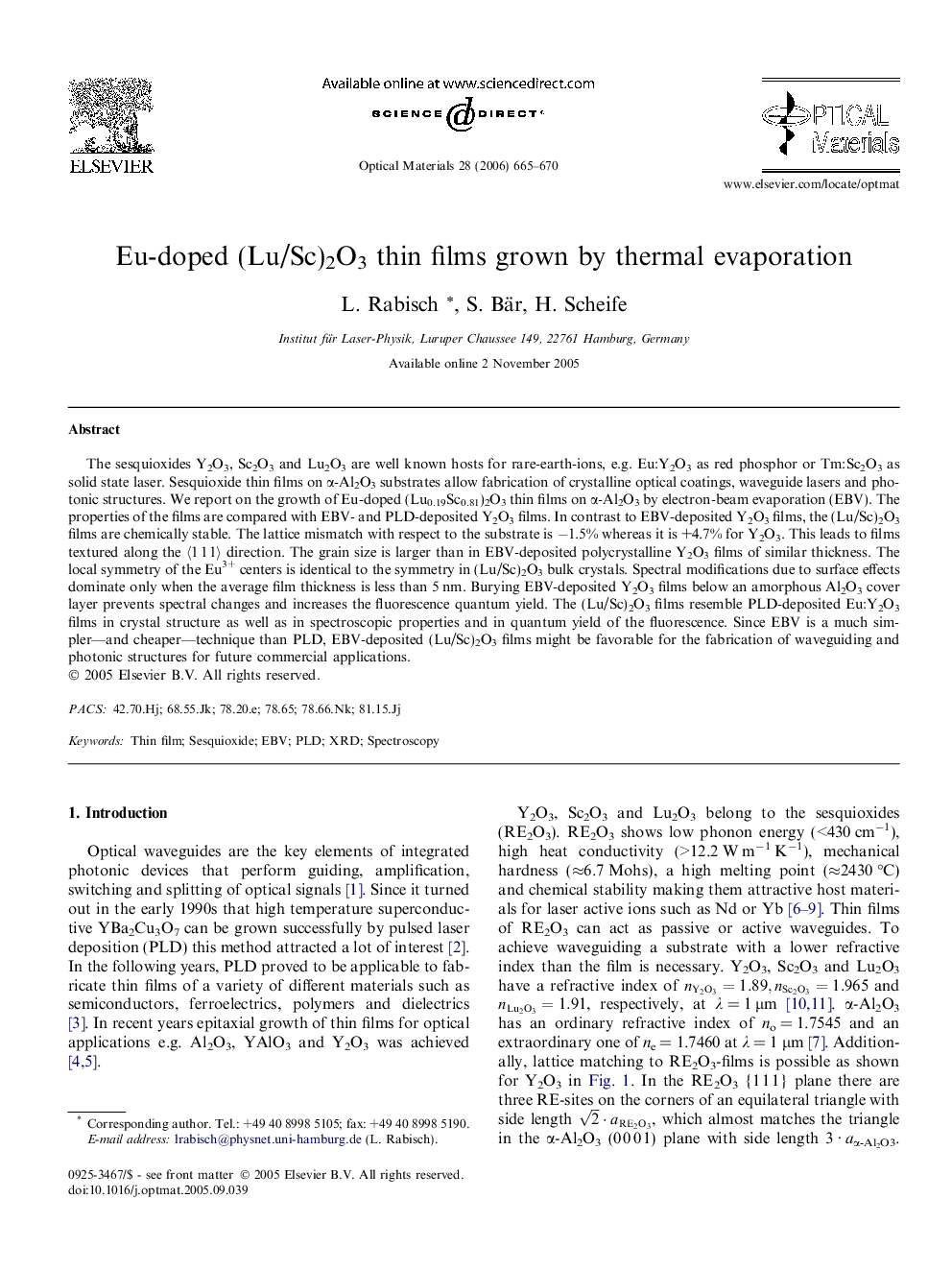| Article ID | Journal | Published Year | Pages | File Type |
|---|---|---|---|---|
| 1497611 | Optical Materials | 2006 | 6 Pages |
Abstract
The sesquioxides Y2O3, Sc2O3 and Lu2O3 are well known hosts for rare-earth-ions, e.g. Eu:Y2O3 as red phosphor or Tm:Sc2O3 as solid state laser. Sesquioxide thin films on α-Al2O3 substrates allow fabrication of crystalline optical coatings, waveguide lasers and photonic structures. We report on the growth of Eu-doped (Lu0.19Sc0.81)2O3 thin films on α-Al2O3 by electron-beam evaporation (EBV). The properties of the films are compared with EBV- and PLD-deposited Y2O3 films. In contrast to EBV-deposited Y2O3 films, the (Lu/Sc)2O3 films are chemically stable. The lattice mismatch with respect to the substrate is â1.5% whereas it is +4.7% for Y2O3. This leads to films textured along the ã1 1 1ã direction. The grain size is larger than in EBV-deposited polycrystalline Y2O3 films of similar thickness. The local symmetry of the Eu3+ centers is identical to the symmetry in (Lu/Sc)2O3 bulk crystals. Spectral modifications due to surface effects dominate only when the average film thickness is less than 5 nm. Burying EBV-deposited Y2O3 films below an amorphous Al2O3 cover layer prevents spectral changes and increases the fluorescence quantum yield. The (Lu/Sc)2O3 films resemble PLD-deposited Eu:Y2O3 films in crystal structure as well as in spectroscopic properties and in quantum yield of the fluorescence. Since EBV is a much simpler-and cheaper-technique than PLD, EBV-deposited (Lu/Sc)2O3 films might be favorable for the fabrication of waveguiding and photonic structures for future commercial applications.
Related Topics
Physical Sciences and Engineering
Materials Science
Ceramics and Composites
Authors
L. Rabisch, S. Bär, H. Scheife,
